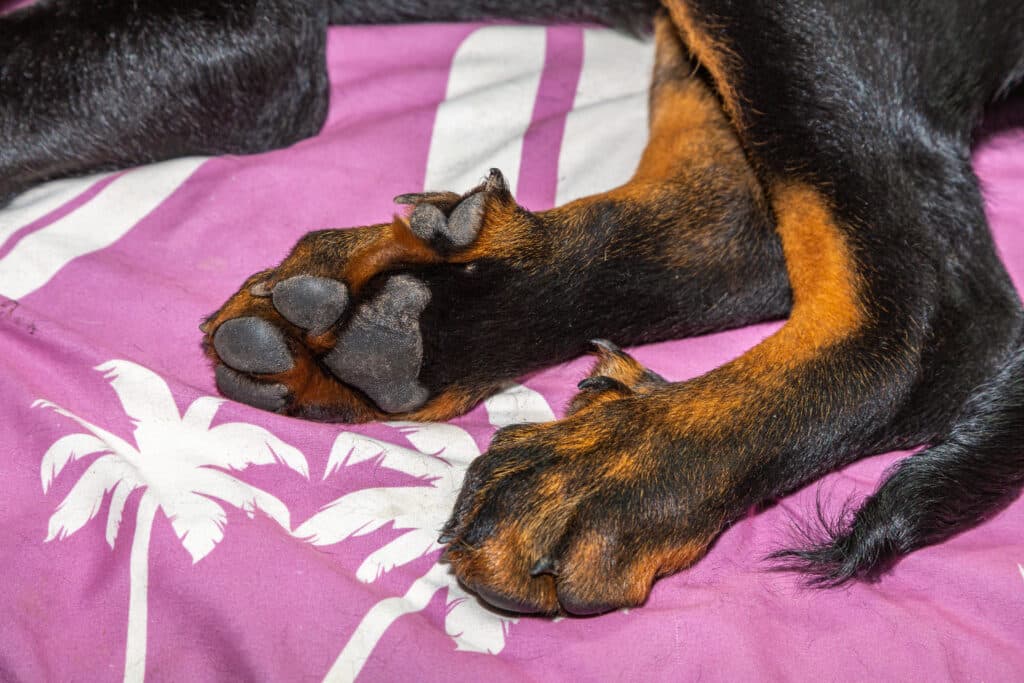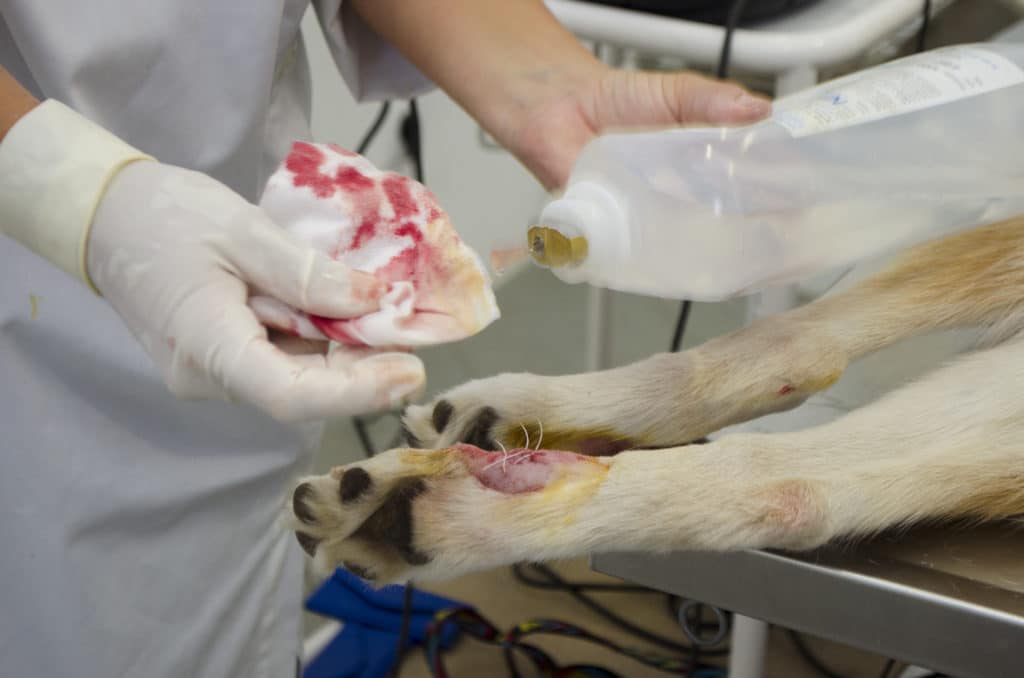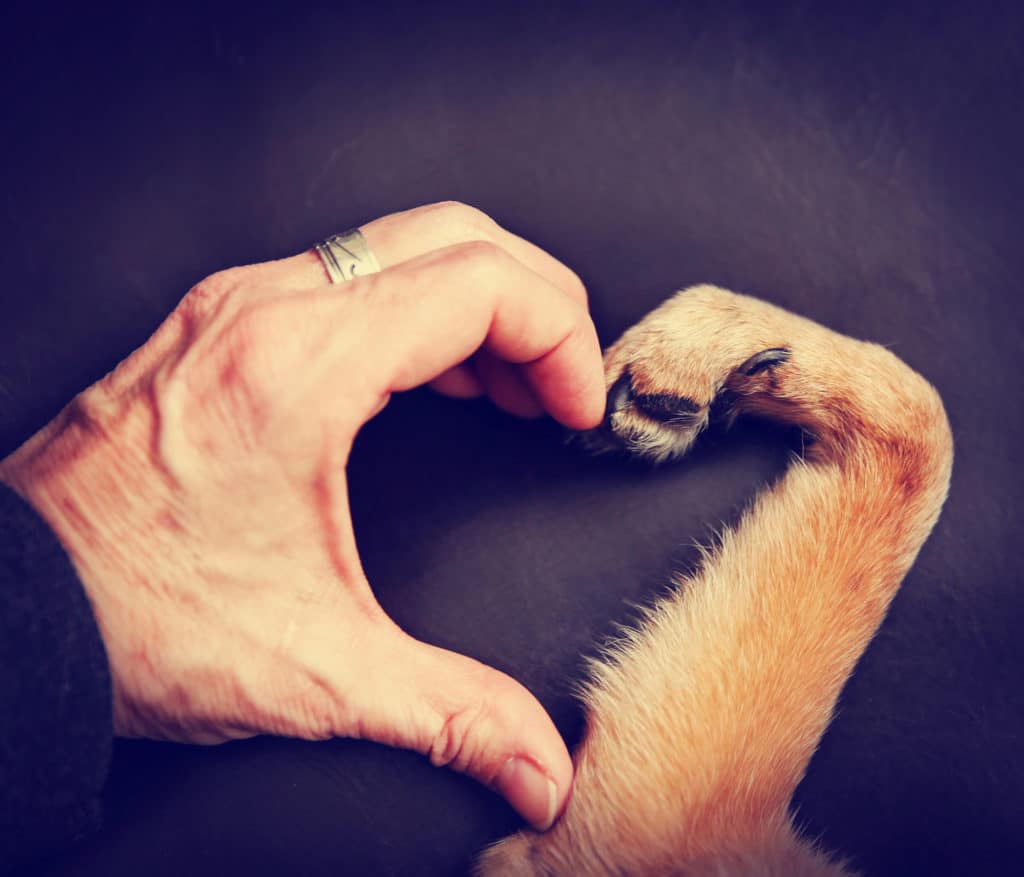Wolf's claw in dogs (What is it exactly?)
- Veterinarian Mag.med.vet. Emin Jasarevic
- Updated: April 6, 2023
In this article we tell you everything important about the wolf's claw. Where it comes from, how it is built and what you can do in an emergency if it is injured. Also, for this article we have Advice from veterinarian Mag.med.vet. Emin Jasarevic obtained. Note: This article is written for the german country.

The extra toe on the hind legs in dogs is called wolf's claw or anus toe or anus claw.
Structure and function of the wolf's claw (What is the wolf's claw anyway?)
The wolf claw is, so to speak, a extra toe in the dog. More precisely, the first toe on the inside of the hind legs. It usually contains a bone. This may be one or more pieces of bone. A distinction is made between articulated and non-articulated.
The connection with the skin consists of connective tissue and is relatively loose. That is why the risk of injury is high here. An articulated connection is tighter, because the claw is connected to the carpal bone. This type is called "thick wolf claw" called.
Similar to the sixth toe in humans, a second wolf claw can form before the dog is born. Here one speaks of a "double wolf claw". From an anatomical point of view, the wolf's claw corresponds to the human big toe.
While all dogs have five toes on their front paws, they usually have only four on their hind paws. The additional fifth toe, the wolf claw, does not occur in all dogs.
Like most carnivorous mammals, dogs move around on their toes. This is called digitigrade gait designated.
However, the wolf's claw is located far up on the metatarsal bone and cannot be used at all when walking. As a result, it is also not shortened in a natural way.
Accordingly, the wolf claw has no benefit or function. Not only that, it also brings disadvantages. Your dog could easily get stuck with it and suffer injuries.
Where does the wolf claw come from (a remnant?)
Since the wolf does not have a wolf claw, one can assume an even older ancestor of the domestic dog as a carrier of the claw.
If you look at the "ground plan" of an original paw, it always consists of five toes. Accordingly, the wolf's claw corresponds to the first toe or thumb.
Due to evolution, these five toes are reduced to single ones. These deformities, which have arisen through evolution, are called Rudiments called.
This case occurred with the first toe of the dog. It has completely regressed. However, in some furry noses, it can reappear as a wolf's claw individually or due to the breed. Especially in larger breeds of dogs this can be the case.
Does the wolf claw depend on the breed?
From this point of view, any dog can grow a wolf's claw depending on its individual disposition.
However, it is more prevalent in certain breeds. Here are some examples:
- Afghan
- Beauceron
- Berger de Brie
- Bernese Mountain Dog
- Bracco Italiano
- Briard
- Great Dane
- Gos d'Atura Català
- Kangal
- Malinois
However, the opposite can also be the case. The FCI prescribes the surgical removal of a wolf's claw in some types of dogs. Provided, of course, that this is permitted by law in the respective country.
Remove wolf claws - is it allowed?
If the wolf's claw is injured in your pet, it may require removal. In this case, it is allowed to have it surgically removed.
Otherwise the Prohibition for amputation of body parts, §6 (1) of the Animal Protection Act. This law prevents an animal from suffering pain or being harmed without a compelling reason.
There are certain cases in which this law does not apply: The veterinarian may prescribe removal for health reasons. Even if the dog is used as a hunting dog, the removal is allowed.
The wolf's claw must be in the form of a Amputation surgical be removed. As a result of a light anesthesia (sedation), a skin incision is made.
Wolf claws that are not hinged are easier to remove than those that are hinged. After removal, a skin suture is made to close the wound.
Health reasons for removal include:
- Tumor
- Trauma
- purulent inflammations
- Injuries
- Risk of injury to self
- Risk of injury for other "fellow pets
Cost of removal

The basic fee schedule for veterinarians prescribes just as all costs. The pure amputation costs amount to approximately 17 euros.
However, there are other costs such as x-rays, anesthesia, and materials for the surgery.
Ask your veterinarian for the total cost for an exact amount.
Wolf claw injuries
First of all it should be said that an injured wolf claw an extremely painful affair is. Therefore, your dog may even bite when you touch the injury. Be careful before you examine him more closely.
A muzzle can be helpful here for your protection. If the wolf's claw is only broken and not bleeding, pass it with Iodine ointment to treat and bandage. It is important to remove the bandage after one night/day and examine the condition.
If only a small piece of claw is broken off, it is enough to shorten it. If the wolf's claw is completely broken off, amputation becomes inevitable.
If the wound is bleeding heavily, the claw is probably torn or completely torn out. Here you must first apply a protective bandage so that your darling does not lick the wound. So no germs can get in.
In this case, a suture and antibiotic treatment are necessary. Until the wound is finally healed, your protégé will probably have to wear a funnel.
You should consult your trusted veterinarian for any wolf claw injury. Only he can professionally assess whether medical or surgical treatment is necessary.
Prevent injuries

The wolf's claw can protrude or grow in. Therefore, to avoid injury, the claw should be regular abridged become. You should cut every six to eight weeks.
This also prevents ingrowing. The short claw also largely prevents tearing, for example, during play.
Frequently Asked Questions
The so-called wolf claw is a remnant of the ancestors of the dog. It corresponds anatomically to the thumb and is not trained by every dog. It has no use.
You should only have the wolf claw removed if it is injured or inflamed. If the wolf claw is healthy, it poses no danger to your dog.
It is best to shorten your dog's wolf claw regularly. This minimizes the risk of injury, because your dog can no longer easily get caught with his claw.
Veterinarian’s Recommendation
Not every dog necessarily has a wolf claw. First check if it is present in your protégé.
Ultimately, it is up to the veterinarian to determine if the wolf claw needs to be removed. Otherwise, it is your responsibility to trim them regularly to prevent injury.

I am a veterinarian and writer on animal health topics. Animals are my passion, and it is my personal goal to create medically accurate articles and videos to educate pet owners as much as possible.
Share Now:

